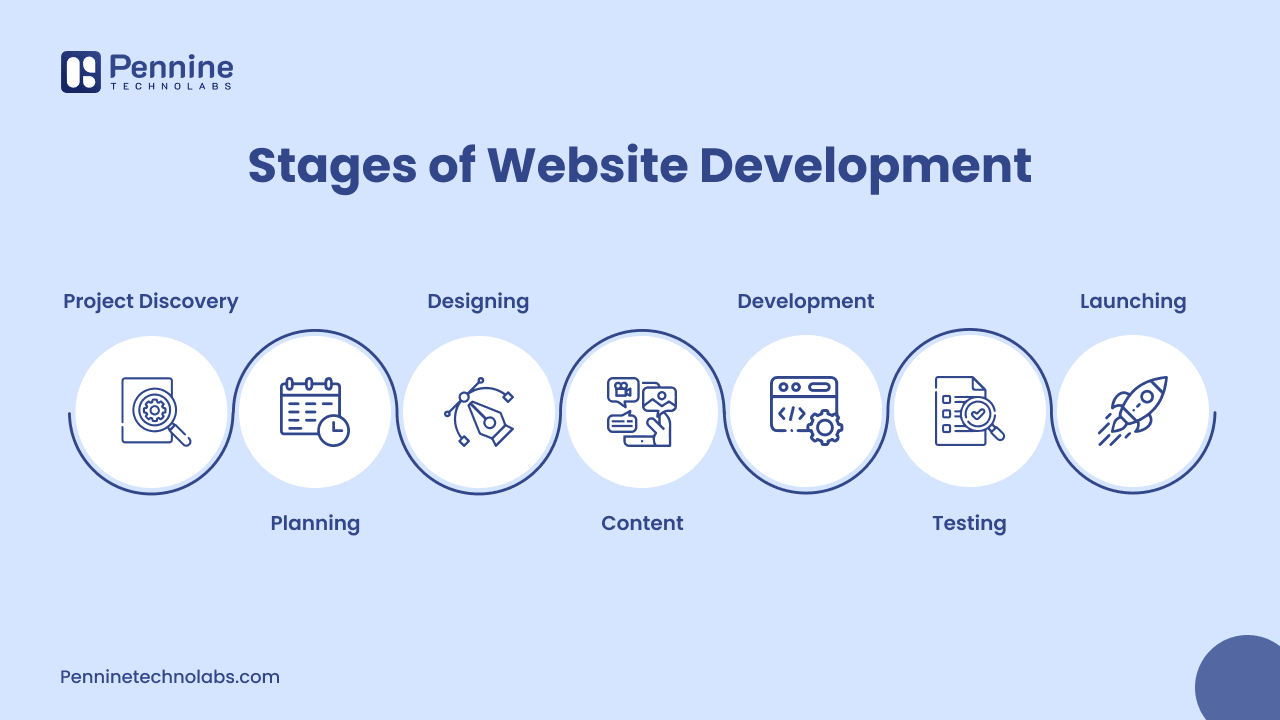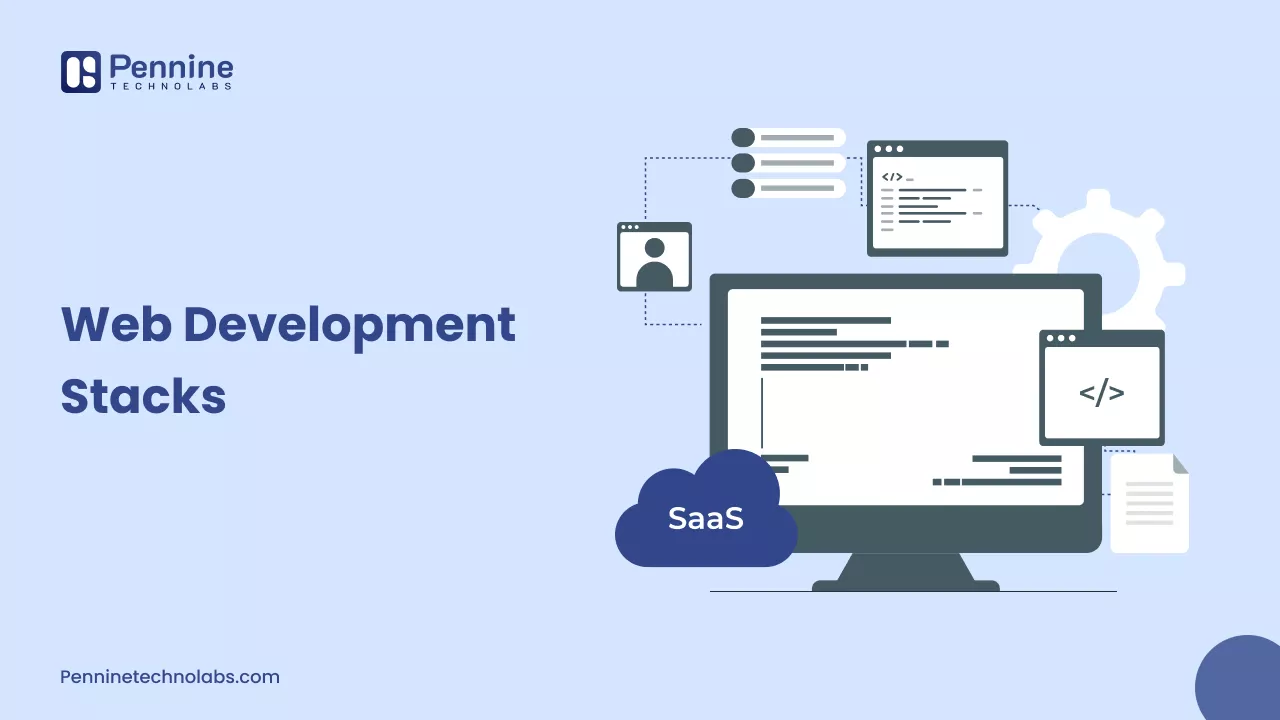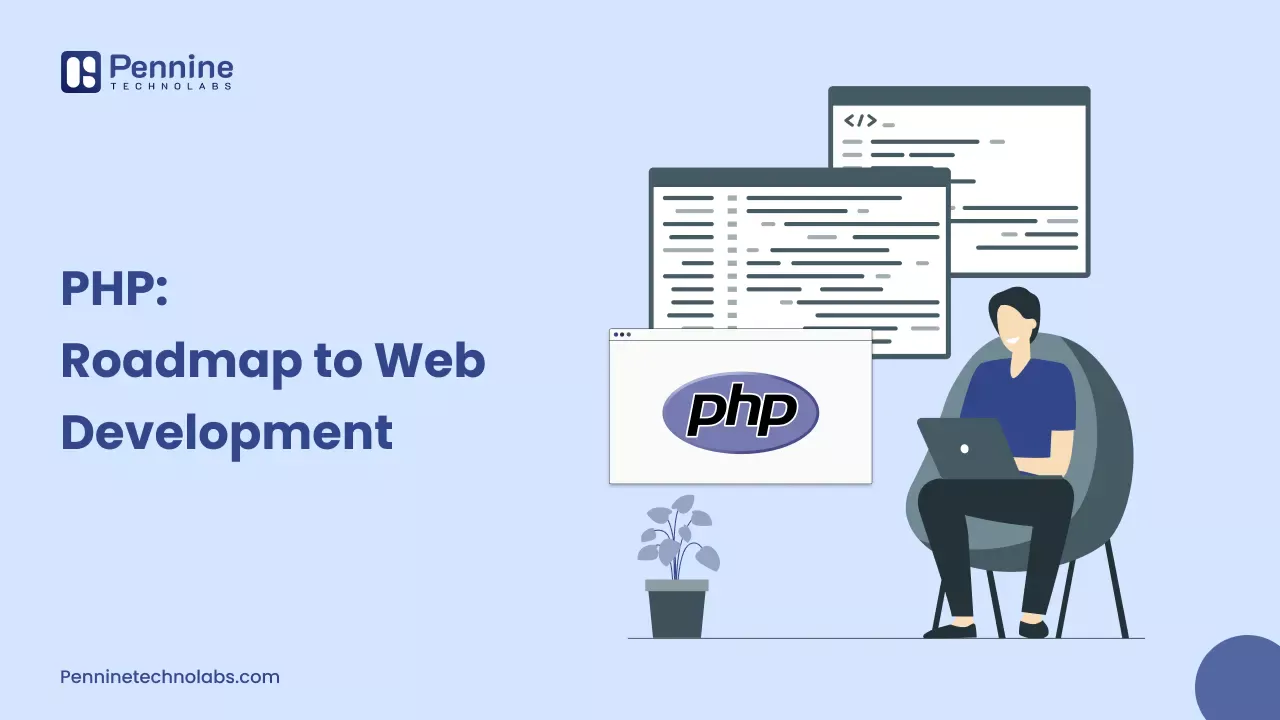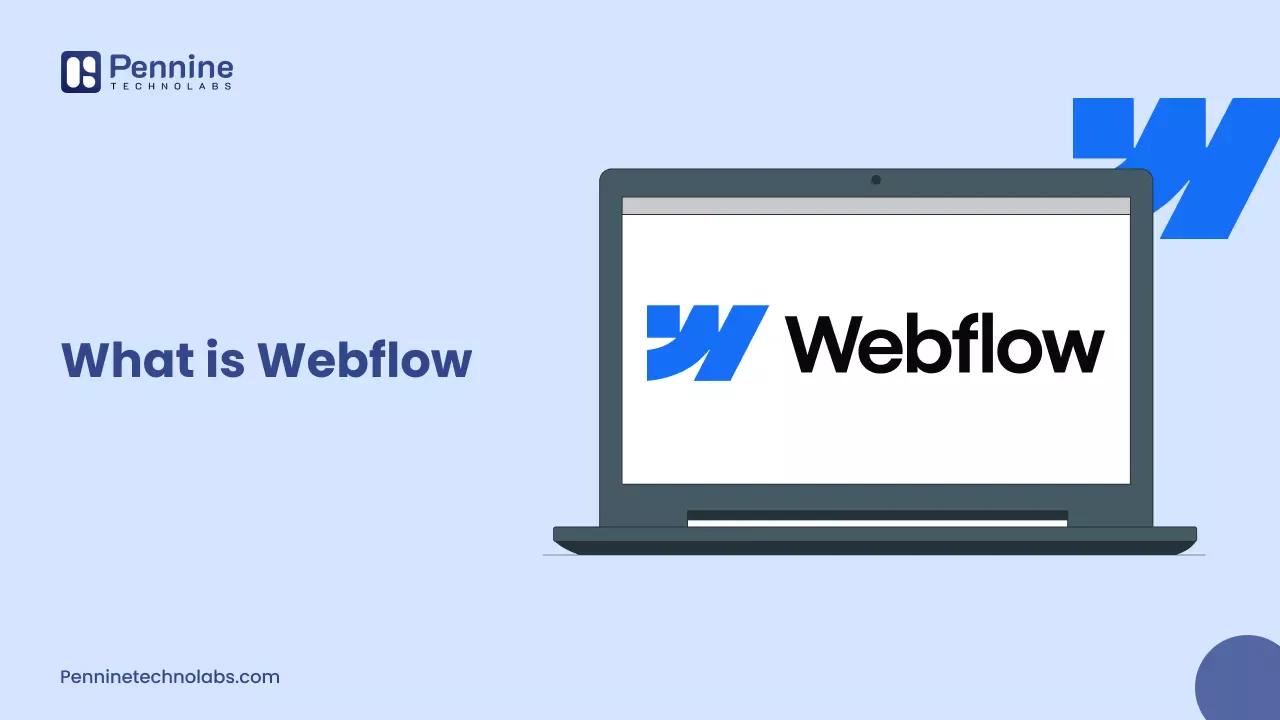Quick Summary: Building a website is more than just coding and design; it’s a structured process that blends creativity, strategy, and technology. Check out the stages of web development, highlighting how each step contributes to a website’s success. Discover the tools to make the process easier to execute web development projects with precision and proven results.
Ever wonder how a high-quality website is created and what process it undergoes? It is not only writing code or designing a web page. A successful website puts a lasting impression on your visitors.
Google also appreciates a structured and clean website that ranks on Google. Web development is not a quick process, but goes through essential stages of development to ensure a high-performing presence of your business. Let’s understand the path from a simple idea to a thriving online platform.
Overview: Web Design and Web Development
A website cannot operate successfully without web design and development. They are the two sides of the same coin and work simultaneously.
Web design is everything about the look and the experience; it is the art and the science of designing a user interface, a user experience that is aesthetically and intuitively appealing, brand-consistent (UI) and brand-consistent (UX). This phase involves strategic choices of layout, color psychology, typography, image, and flow. A web designer takes care of giving the visitors a clear idea of what the site is, how to navigate through it with ease, and why they should stay. To optimize and rank on the current search engines, website design is vital for user engagement signals such as dwell time and bounce rate.
Web Development is technical heavy lifting that translates the provided web design into reality and the site into a working version. The web developers work with languages such as HTML, CSS, and JavaScript on the frontend (what you see) and Python, PHP, ReactJS or Node.js languages, and databases on the backend (server logic and data management). For good Google rankings, development quality is the key; clean and optimized code ensures high loading speed and firm performance, which are the essential technical SEO requirements.
The 7-Step Process to a Killer Website
A proper website development lifecycle is the strategic roadmap for a quality website launch. These are the seven crucial steps that we use in any successful project:
Project Discovery: The Basics.
This is where your website gives starters. Consider it as mapping your website route before taking a single step. Understand the purpose and goals of your website. Do you want to generate leads, sell products, or services? A clear objective will give you better direction to work.
Also, get to know your target audience and what they want. Identify a suitable platform (WordPress, Webflow, or a Custom framework), required integrations, and functional needs.
Project Planning: The Blueprint
After we understand the purpose of building it, we know how to make it. It is a stage where it all concerns structure. We map out the pages and interlinking, the structure of the whole site. This is essential for user navigation and SEO.
Wireframing is the visual model that provides a simple, skeleton layout to focus on where the elements are placed, such as where the contact form is placed or where the navigation will run. It holds a rational user experience (UX). Choose the technology stack, with the choice of tools, languages (such as Python, JavaScript, or PHP), and databases to be used to build the site.
Web Designing: Bringing the Vision to Life
After the framework is in place, our web designers create the visual design that involves choosing colors, typography, images, and a general aesthetic that is in line with your brand.
Unlike the other modules, the user interface (UI) creation involves designing each button, form, and interactive element. Here, it is all about making a beautiful, modern and interesting interface. Mockups and interactive prototyping will give you a look and feel of the website before any code is written, thus saving you time and resources in the future.
Content Creation: The SEO Powerhouse
Your company website is powered by content, and the secret to search on Google SERP is also attracting LLMs (the engine behind Google AI and ChatGPT). Keyword research and optimization offer target keywords into headlines, body, and meta descriptions in a natural manner so as to be seen by search engines.
Writing and editing original and friendly copy that satisfies the search purpose of your audience. Website assets can be collected or produced, including high-quality pictures, videos, and infographics, to improve engagement and inter-textuality.
Web Development: The Build
The content and the designs are handed over to the development team. It is here that the code is played.
Frontend Development: Building what the user interacts with and sees with the help of HTML, CSS, and JavaScript. Hiring web developers from India to ensure responsive websites is paramount for modern Google rankings.
Backend Development: Coding the server-side logic, databases, and application programming interfaces (APIs) that cause the website to work, safely controlling data and user interaction.
CMS Integration: The Content Management System (e.g., WordPress) will be set up in such a way that content can be edited or maintained without a developer.
QA Testing: Polish and Perfection
Your Company website is not rolled out without intense testing. Quality Assurance (QA) makes the site perfect and presentable to the public.
Functional Testing: Testing each link, button, form, and feature to make sure that everything is functioning as planned.
Cross-Browser and Device Testing: Checking the website has been correctly displayed and is operational in all the popular browsers (Chrome, Safari, Firefox) and devices.
Performance Testing: Evaluation of the speed of the sites, the loads, and other technical aspects of SEO, such as page structure and mobile compatibility.
Security Audits: Conducting an audit to detect and fix vulnerabilities.
Launching and Web Support: Go Time!
The moment of truth. This stage takes the project out of the development setting to the live internet.
Deployment: Migrating the well-tested database and website files into the production server.
Post-Launch Checks: – A last-minute, quick run-through of the live website to identify any server-type glitches.
Continuous Support and Maintenance: Websites are never completed. This includes regular security upgrades, content updates, and performance checks.
After Launch: Scaling Your Website
Once the website is live, the work shifts from building to growing. To make it more scalable, work on the marketing of your website.
Analytics Deep Dive: With the assistance of such tools as Google Analytics, it is possible to track user behavior, conversion rates, and traffic sources. This data informs all future decisions.
Conversion rate optimization (CRO): The constant experimentation and adjustment of the factors (such as headlines, button copy, layout) to get a higher percentage of visitors to take an action.
New Feature Implementation: The implementation of new tools, pages, or integrations based on user feedback and business expansion.
Digital Marketing Services: Grow our website with SEO strategy, social media marketing, PPC, and Email marketing. A digital marketing agency will provide proper marketing report and monthly performance metrics will give you better information every month.
20 Tools To Streamline the Website Development Process
The modern web development process is made efficient by an incredible ecosystem of powerful tools. Here are twenty of our favorites that enhance quality and workflow:
- Visual Studio Code – A free, powerful, and versatile code editor for your next web development project.
- Sublime Text – Use a fast, sophisticated text editor for code, markup, and prose.
- Figma – Web designers’ favorite tool for UI/UX design and prototyping.
- Sketch – Get a vector-based design tool primarily for macOS.
- GitHub – A platform for hosting and reviewing code, using the Git system for all your projects in one place.
- Notion – It helps in managing documentation and workflows.
- Bootstrap – Get an HTML, CSS, and JS framework for responsive design.
- Asana – Assign tasks and monitor team progress with the Asana dashboard.
- Cloudflare – Improve the speed and security of the website.
- WordPress – Use the most popular CMS for flexible website building
- MySQL – Get an open-source relational database management system
- Google PageSpeed Insights – Measures website performance and provides optimization suggestions.
- Selenium – Get framework for automated web application testing.
- Ahrefs/Semrush – Comprehensive tools for keyword research and competitive analysis.
- Google Search Console – Monitors website performance in Google Search results.
- Postman – A Tool for testing and developing APIs.
- Nginx – High-performance web server and reverse proxy.
- NPM (Node Package Manager) – Manages JavaScript dependencies.
- Sass – CSS extension language for more efficient styling.
- Docker – A Containerization tool for consistent deployment environments.
How Pennine Technolabs Works with the Web Development Process
At Pennine Technolabs, we adopt an agile approach to the web development process, which allows for flexibility and client collaboration at every milestone. Our Mission is to create high-quality, secure, and future-ready websites to generate revenue and a foundation for business growth.
We focus heavily on:
Strategic Roadmap: Our project discovery is careful and is planned to reach the correct keywords and business goals at the very first step, which would allow optimizing Google AI and LLM rankings.
Clean, Scalable Code: We focus on clean code, which is the key to a quick load time and a favorable user experience, which are the crucial factors in Google ranking.
End-to-End Support: We do not stop working together at the time of launch. We offer continuous repair and planning upgrading services so that your investment will still pay off.
The most important thing to make in your next digital project is to choose Pennine web development services with an excellent grasp of the entire process, starting with the discovery call and continuing with the post-launch audit of the project, including the SEO. Don’t settle for less.
Would you be interested in finding out how Penninne Technolabs can use this 7-stage process in your own business idea?
FAQs on Web Development Process
How long does the web development process take?
Typically, a standard business website takes 6–10 weeks, depending on complexity and features.
What is the most important stage of web development?
Every stage matters, but discovery and planning set the foundation for success.
Do I need to maintain my website after launch?
Yes. Regular updates, backups, and security monitoring are essential for long-term performance.
Why should I hire Pennine Technolabs for web development?
We combine design expertise, modern technology, and transparent project management to deliver websites that convert and scale with your business.



